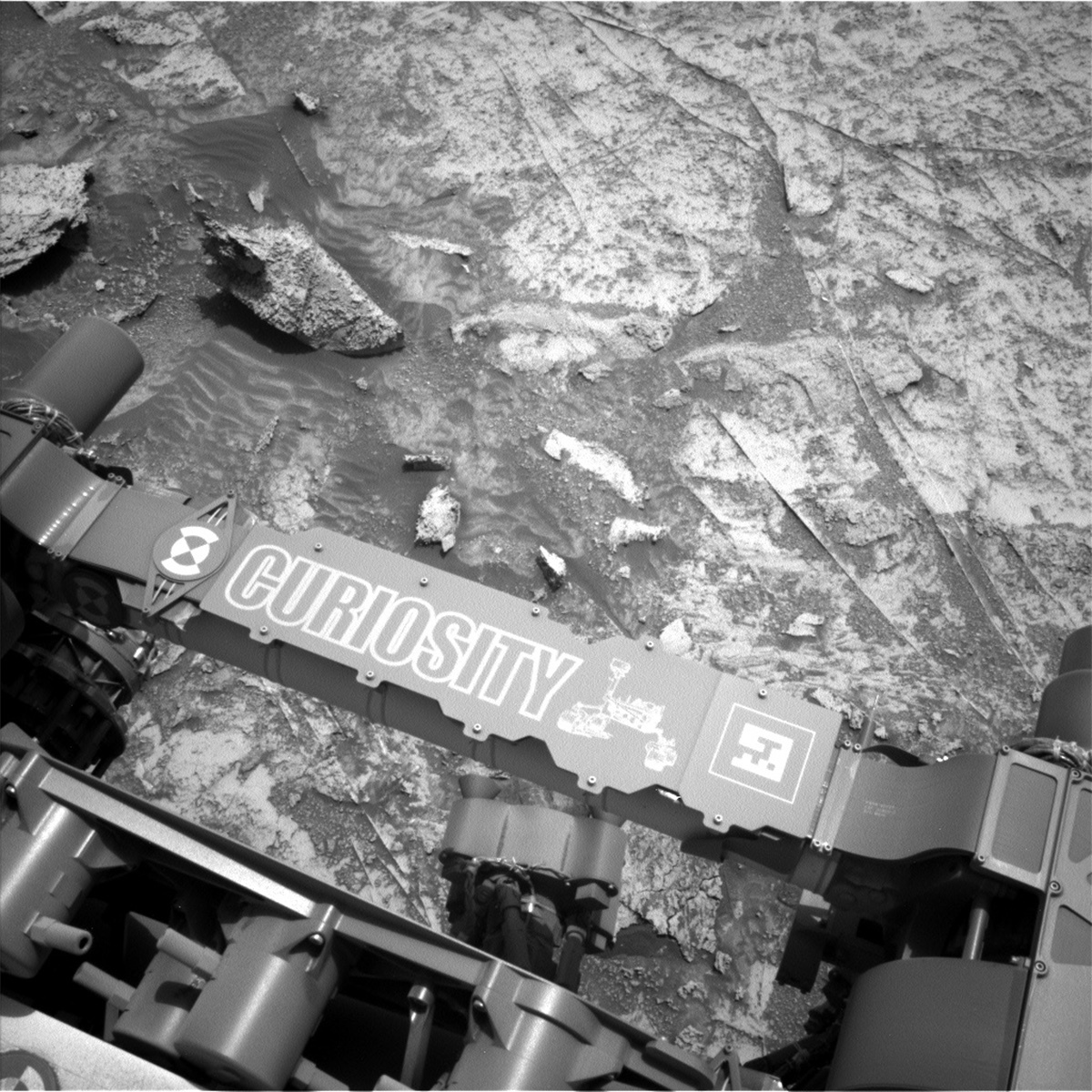3 min read

This weekend plan is a four sol plan to allow a no planning day on Monday, for the commemoration of “Juneteenth,” and we crammed a lot in. This workspace is relatively similar in appearance to the last workspace (which is not that far away) but still had more potential targets than we could ever hope to capture, even in a big four sol plan. There is a finite amount of time that we can fill with science and every team wants to make the most of their instrument, so planning days like this one involve a lot of work and lots of back and forth between instruments. Plans (like this one) which feature multi-instrument investigation of targets are the best of all worlds, keeping all instruments busy and teams happy, whilst optimizing the science … and hopefully recording everything that this site can show us.
APXS, ChemCam and MAHLI all cooperate to analyze the target “Opadai.” This dusty bedrock target continues our campaign to catalogue bedrock compositions, a primary science goal. We have gathered these bedrock compositions regularly, allowing us to track changes and to help identify trends, over the entire traverse – a distance of 28 kilometres as noted by our last blogger, Natalie Moore. Geochemical results are uploaded to the NASA online database “Planetary Data System” every few months, so that this data can be available to everyone, and the newest images are always available on the NASA “Mars Exploration Program” Raw Images webpage.
Mastcam and MAHLI will look at potential diagenetic features on “Kukui” (a large out of place block, shown in the image above), whilst ChemCam and MAHLI team up to document “Salto Angel” (a dark rough looking material, overlying the bedrock). Salto Angel is crosscut by a long linear white vein, so ChemCam will analyze across the whole target, giving compositional data for both.
Mastcam will image both small scale and large-scale colour and texture changes in this plan. In the immediate workspace, there are some interesting changes in colours and textures in the pebbly, sandy regolith in the target “Amozonas,” and in the distance, much larger scale changes will be documented on the butte “Bolivar.” This target has been imaged several times and this newest set of images will add to that collection, but from a slightly different perspective.
ENV continue their routine monitoring of environmental conditions, with tau and crater rim extinction measurements (to record dust levels in the atmosphere). Finally, we will have a short drive, positioning ourselves on a nearby large patch of bedrock, for contact science next week.
Written by Catherine O'Connell-Cooper, Planetary Geologist at University of New Brunswick







